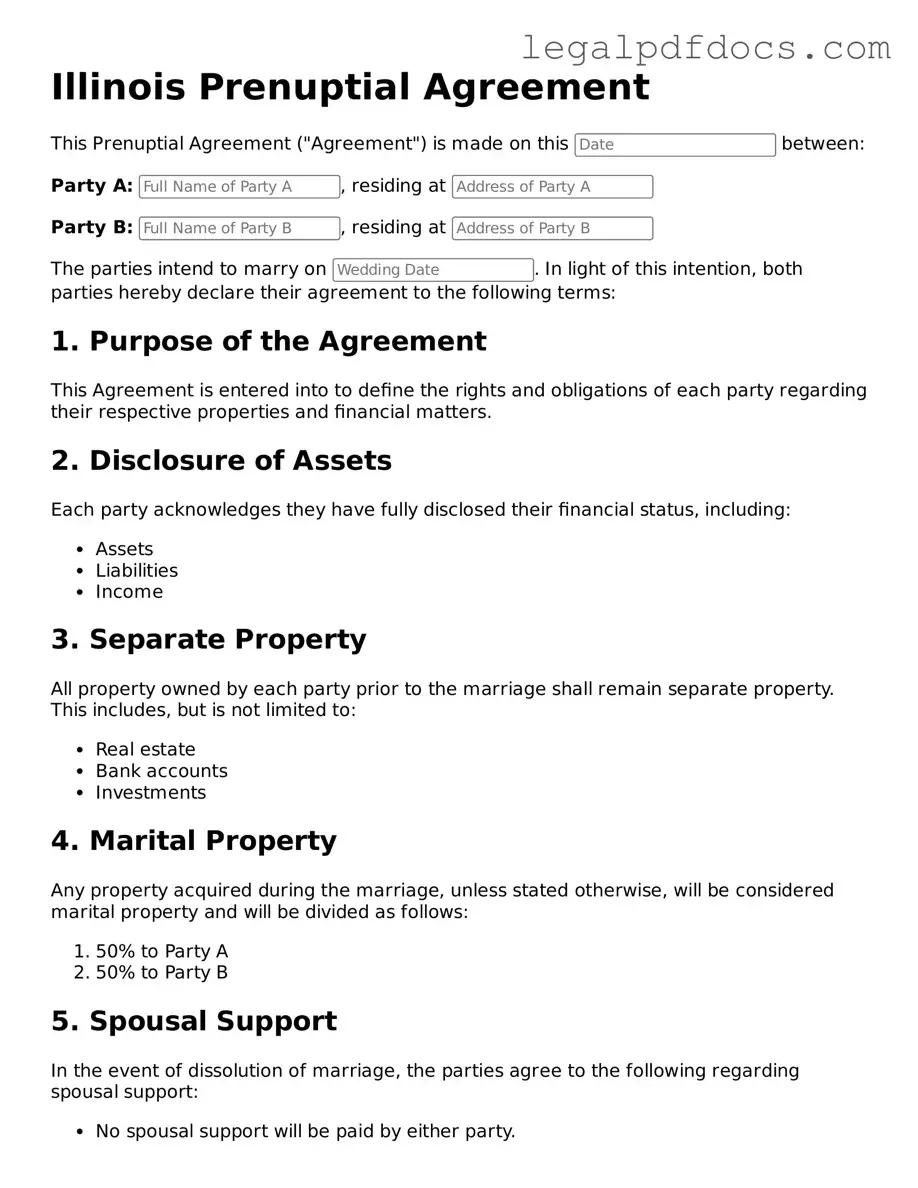When couples in Illinois consider marriage, they often face the important decision of whether to create a prenuptial agreement. This legal document serves as a proactive measure to outline the financial rights and responsibilities of each partner in the event of a divorce or separation. The Illinois Prenuptial Agreement form covers several key aspects, including the division of property, the management of debts, and the handling of spousal support. Additionally, it allows couples to clarify their individual assets and liabilities, ensuring transparency and mutual understanding before tying the knot. By addressing these critical issues in advance, a prenuptial agreement can help reduce potential conflicts and misunderstandings, providing both partners with peace of mind as they embark on their journey together. Understanding the nuances of this form is essential, as it must comply with state laws to be enforceable in court. Couples should consider discussing their unique circumstances with a legal professional to tailor the agreement to their specific needs.
